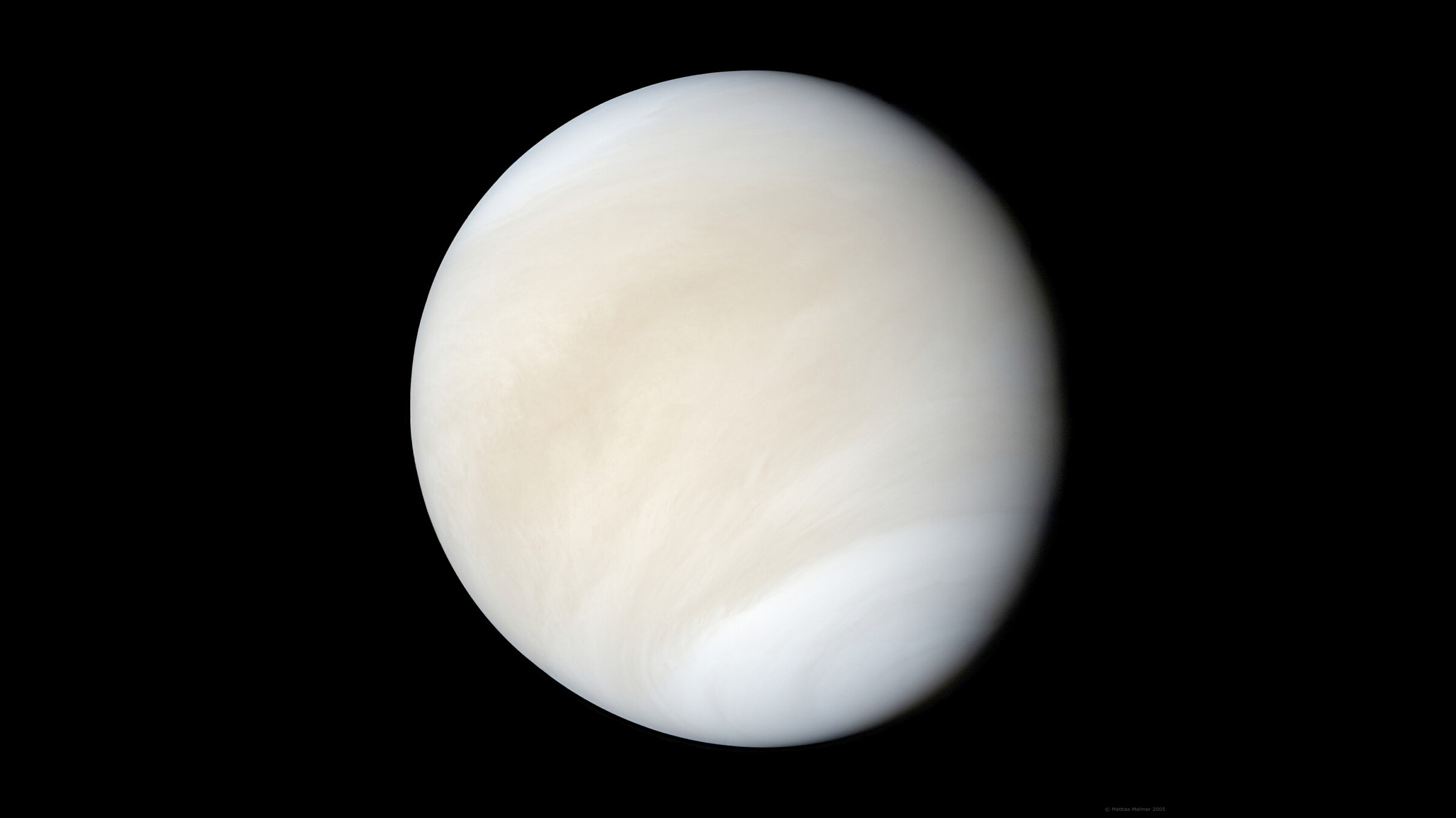Kate Howells • Jul 28, 2023
Life on Venus: Your Questions Answered
Is there life on Venus? People have asked this question for as long as we’ve known that the bright object in the morning and evening skies was a planet.
Back when optical telescopes were the only tools humans had to peer into space, all we could see of our nearest celestial neighbor was a cloud-shrouded planet. Some scientists at the time thought that Venus might not be too different from Earth, since both planets are of similar size and have atmospheres. Perhaps, they thought, Venus was covered in humid swamps, filled with exotic alien creatures. In the 1960s when NASA and the Soviet space agency started using radar imaging technology to look beneath Venus’ clouds, this perception changed dramatically.
Today, we know Venus to be an extremely inhospitable environment. And yet the question of whether it could be home to life is still up for debate as scientists continue to discover new things about the mysterious world.

What is Venus like today?
With extreme heat and crushing atmospheric pressure, the surface of Venus today is one of the deadliest environments in the Solar System.
Venus is the hottest planet in the Solar System, even though Mercury is twice as close to the Sun and receives four times more solar energy. At the surface, Venus has average temperatures of 470 degrees Celsius (878 degrees Fahrenheit) — hot enough to melt lead.
Venus is so hot because of its thick carbon dioxide atmosphere, which traps heat creating a runaway greenhouse effect. Fifty-four times more dense than Earth’s, it is the densest terrestrial atmosphere in the Solar System. The atmospheric pressure on the surface of Venus is about 92 bar, or 1,350 pounds per square inch. This is the equivalent of the pressure you’d experience if you were a kilometer (about 0.6 miles) underwater on Earth.
What was Venus like in the past?
Although Venus is a hellscape today, it likely used to have similar conditions to Earth: oceans of liquid water, a mild climate, and other characteristics that may have made it habitable.
Past missions to Venus have found evidence of granite-like rocks that would have required the presence of water to form. Because of hints like this, some scientists think the planet may have had liquid water on its surface for 2 billion years.

Did life exist on Venus in the past?
Because liquid water is the key to life as we know it, if Venus had water on its surface for billions of years it’s possible that microbial life emerged during that time. We don’t know for sure, though, and looking for evidence of past life on Venus is almost impossible with current technologies.
Although orbiters can teach us a lot about a planet, to search for signs of past life we need to take a much closer look. On Mars, we look for past microbial life by sending rovers like Curiosity and Perseverance to analyze rock samples. But Venus is a much more difficult place to explore on the surface. Only a handful of landers have successfully operated on the Venusian surface. Many more have tried and failed, but even the successful missions were only able to operate for hours at most before being destroyed by the planet’s extreme conditions. This doesn’t give spacecraft enough time to do things like collect and analyze rock samples to look for microscopic fossils.
Does life exist on Venus now?
Although life as we know it is almost certainly impossible in the harsh conditions on the surface of Venus, it’s possible that it could survive in the Venusian atmosphere. Although Venus’ lower atmosphere contains toxic clouds of sulfuric acid, at higher levels the conditions are much less deadly.
In 2020 scientists announced they found phosphine gas — a potential biosignature, i.e. a chemical strongly associated with biological processes — in Venus' clouds 50 kilometers (roughly 31 miles) above the surface, where temperatures and pressures are much more Earth-like. Phosphine’s presence has since been disputed, then later reclaimed but with an alternative explanation for its origins, disputed once again, and redetected lower in the atmosphere. The verdict on whether phosphine exists in the clouds of Venus, and whether its presence would mean there were life forms producing it, is still very much undecided.
Support our core enterprises
Your support powers our mission to explore worlds, find life, and defend Earth. You make all the difference when you make a gift. Give today!
Donate

 Explore Worlds
Explore Worlds Find Life
Find Life Defend Earth
Defend Earth

